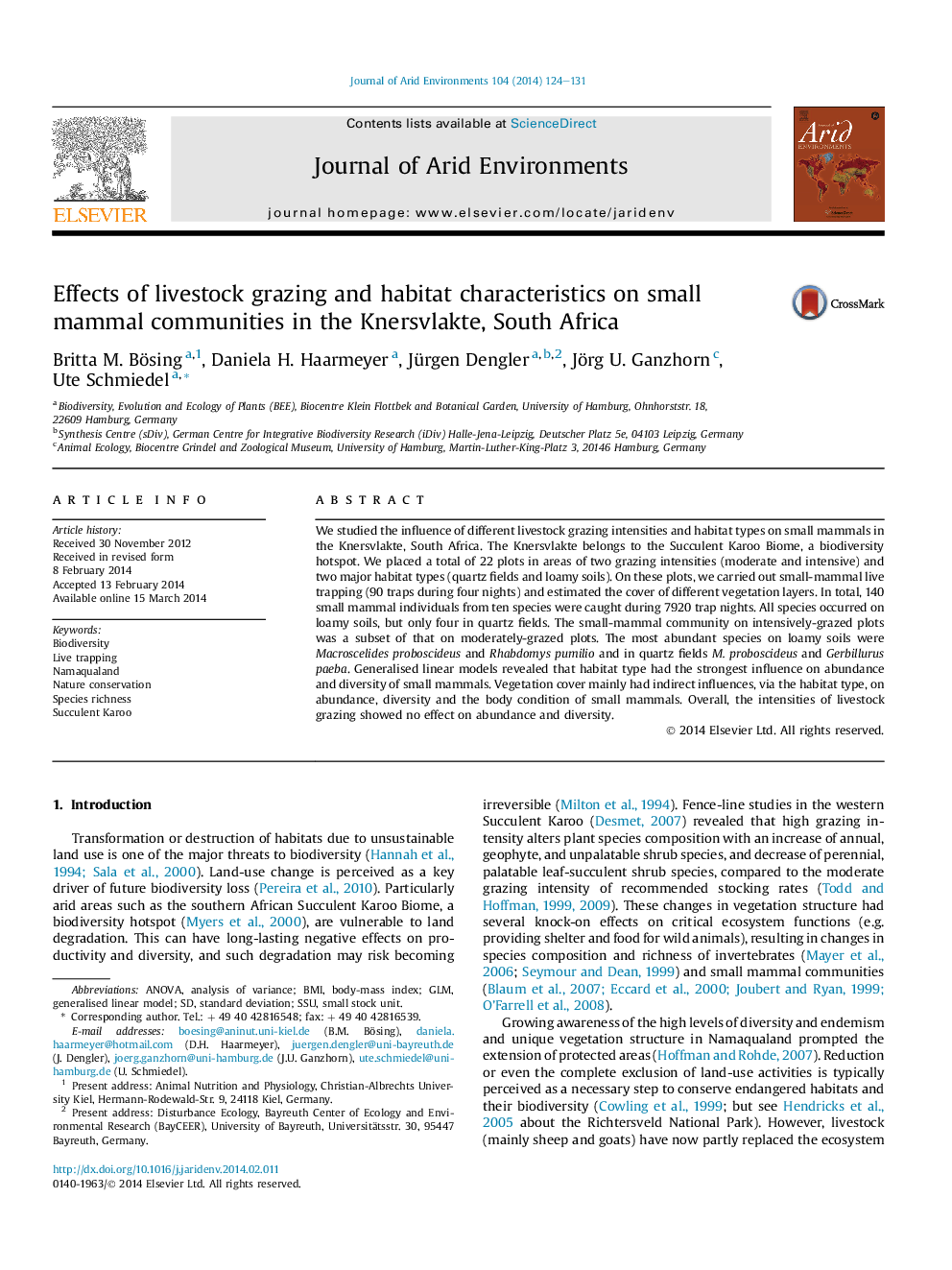| Article ID | Journal | Published Year | Pages | File Type |
|---|---|---|---|---|
| 4393018 | Journal of Arid Environments | 2014 | 8 Pages |
•Small-mammal community on intensively-grazed was subset of moderately-grazed plots.•Habitat type had the strongest influence on abundance and diversity of small mammals.•Vegetation cover had indirect influences on abundance and diversity of small mammals.•Vegetation cover had indirect influences on the body condition of small mammals.
We studied the influence of different livestock grazing intensities and habitat types on small mammals in the Knersvlakte, South Africa. The Knersvlakte belongs to the Succulent Karoo Biome, a biodiversity hotspot. We placed a total of 22 plots in areas of two grazing intensities (moderate and intensive) and two major habitat types (quartz fields and loamy soils). On these plots, we carried out small-mammal live trapping (90 traps during four nights) and estimated the cover of different vegetation layers. In total, 140 small mammal individuals from ten species were caught during 7920 trap nights. All species occurred on loamy soils, but only four in quartz fields. The small-mammal community on intensively-grazed plots was a subset of that on moderately-grazed plots. The most abundant species on loamy soils were Macroscelides proboscideus and Rhabdomys pumilio and in quartz fields M. proboscideus and Gerbillurus paeba. Generalised linear models revealed that habitat type had the strongest influence on abundance and diversity of small mammals. Vegetation cover mainly had indirect influences, via the habitat type, on abundance, diversity and the body condition of small mammals. Overall, the intensities of livestock grazing showed no effect on abundance and diversity.
